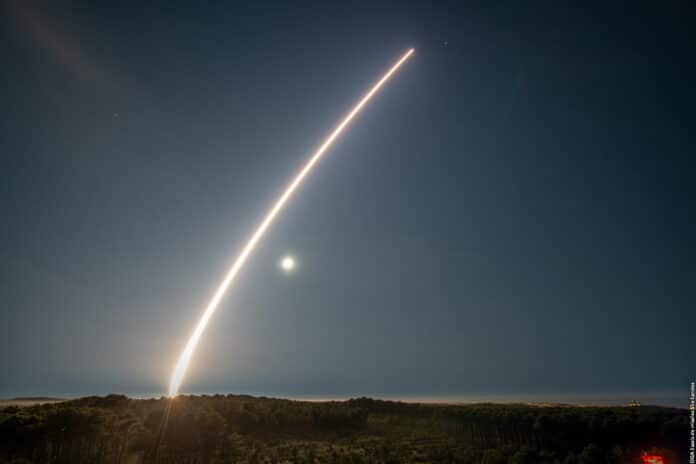On November 18, 2023, France successfully test-fired an M51.3 strategic long-range ballistic missile that carries the country’s submarine-borne nuclear deterrent wing.
This firing was conducted under the French General Directorate of Armaments (DGA) and was fired from the DGA missile testing site in Biscarrosse, southwestern France. The missile flight splashed down in an isolated sea area in the North Atlantic, hundreds of kilometers from any coastline, the ministry said, without giving further details.
This flight made it possible to validate an important evolution of the missile, which will contribute to perpetuating the credibility of France’s oceanic deterrence deterrence capabilities over the coming decades.
The missile’s entire flight phase was closely monitored by the General Directorate of Armaments’ Test Resources (DGA). This test was carried out without a nuclear charge and in strict compliance with France’s international commitments. This shot, carried out as part of the M51 program, once again demonstrates the excellence of the high technology that French industries are implementing in this area.
This weapons program is in line with the President’s determination to take necessary actions to maintain the nuclear forces’ operational credibility in the international landscape at the level of strict sufficiency.
The M51.3 missile is an upgraded version of the M51, a three-stage sea-land strategic ballistic missile designed to be launched from French Navy submarines. The M51 was first test-fired from a ground base in 2006 and from a submarine in 2010, the year it was commissioned.
The new M51.3 missile, which is expected to enter service around 2025, is developed by aerospace firm ArianeGroup, a joint venture between Airbus (AIR.PA) and French defense group Safran (SAF.PA). This variant has been in development since 2014 and comes with several improvements, including the capacity to carry warheads with a yield of up to 150 kilotons, as well as a more advanced third stage for extended range and the ability to penetrate missile defenses. The actual upper range of the missile is classified, but it is estimated to be around 8,000-10,000 km and can reach a top speed of Mach 25.
Ballistic missiles share similarities with rockets as they, too, follow elliptical trajectories after launch. They often fly outside the earth’s atmosphere to reach lower space. In contrast, cruise missiles usually fly at low altitudes, follow straight trajectories, and use continuous thrust until they reach their intended target.
